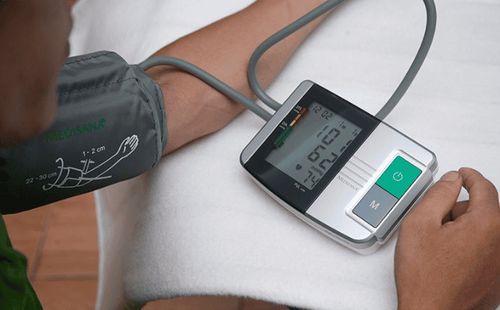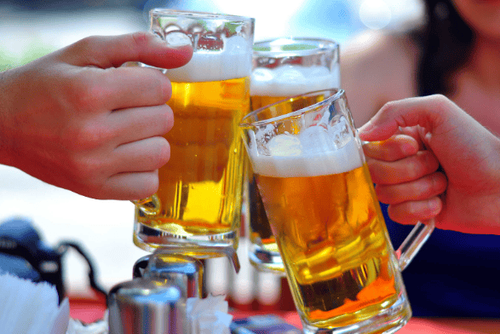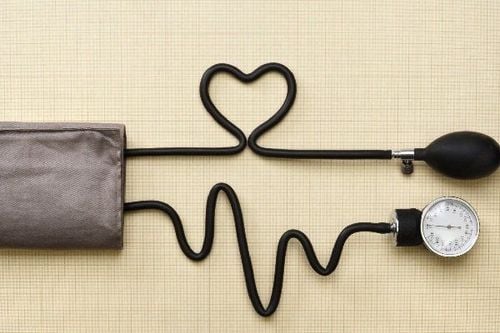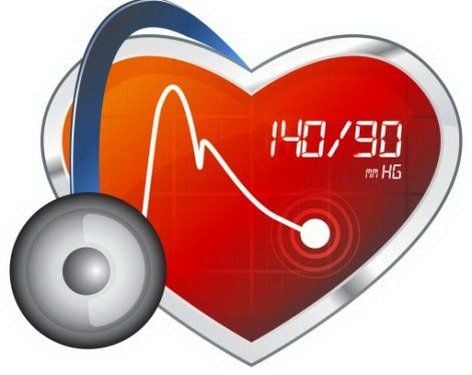This is an automatically translated article.
The article was professionally consulted by a doctor at Cardiology Center - Vinmec Central Park International General Hospital.Hypertension is the most noticed cardiovascular risk factor. High blood pressure increases the risk of heart attack and stroke. If you combine obesity, smoking and high cholesterol, the risk of heart disease or stroke will increase significantly.
1. Levels of hypertension
According to WHO, normal blood pressure in adults is systolic blood pressure < 140 mmHg and/or diastolic blood pressure < 90 mmHg.
High blood pressure, or what many people call high blood pressure, is a common condition when the pressure of the blood on the walls of the vessels is too high. If this level of blood pressure is elevated for a long time, it can cause many health problems such as diabetes, kidney failure, stroke, cardiovascular risk, ... even dangerous complications. to the patient's life.
Grades of hypertension:
Prehypertension This stage occurs when systolic blood pressure is in the range of 120 - 130 mmHg, diastolic blood pressure is in the range of 80 - 89 mmHg. This is the initial stage of hypertension, but should not be ignored, because it will quickly progress to hypertension if not timely intervention.
At this stage, it is necessary to have a reasonable lifestyle, eat in moderation, eat less fat, reduce salt, exercise regularly.

Tập thể dục thường xuyên, giảm béo để ngăn bệnh tiến triển
Stage 1 Hypertension If the systolic blood pressure is 140-159 mmHg, and the diastolic blood pressure is 90-99 mmHg, you are in stage 1 hypertension. This is the stage of hypertension. mild symptoms, few manifestations and not much damage to blood vessels as well as other internal organs.
At this time, your doctor may give you a diuretic to control your blood pressure and you need to adjust your lifestyle and regularly control your blood pressure.
Stage 2 Hypertension Grade 2 hypertension is when the systolic blood pressure is between 160–179 mmHg and the diastolic blood pressure is between 100 and 109 mmHg. At this time, the signs of damage are clear, such as: partial or total stenosis of the coronary arteries, atherosclerosis, left ventricular hypertrophy ... can be detected by ultrasound.
The condition can get worse at any time, so the doctor will prescribe diuretics in combination with antihypertensive drugs.
Hypertension stage 3 The blood pressure measured at rest is above 180 mmHg for systolic blood pressure and above 110 mmHg for diastolic blood pressure. The current situation is at a red alert level, extremely dangerous. By this time, the internal organs and blood vessels have been seriously damaged such as: aneurysm, arterial occlusion, angina pectoris, heart attack, heart failure, stroke, cerebrovascular accident, heart failure. kidney , retinal hemorrhage , ... even lead to death .
Isolated hypertension Isolated hypertension is of two types, isolated systolic hypertension and isolated diastolic hypertension. Isolated systolic hypertension is defined as systolic blood pressure greater than 140 mmHg that is associated with normal diastolic blood pressure (<90 mmHg). Isolated diastolic hypertension is when systolic blood pressure is less than 140 mmHg and diastolic blood pressure is greater than 90 mmHg. These conditions are usually benign, but they should not be taken lightly.

Tăng huyết áp được chia thành nhiều mức độ
2. Risk of cardiovascular disease according to each degree of hypertension
Based on blood pressure classification, the number of cardiovascular risk factors and cardiovascular events to have a long-term management, monitoring and treatment strategy.
The risk of cardiovascular disease according to each grade of hypertension is as follows:
3. Avoid cardiovascular risk by treating high blood pressure
3.1. General principles Hypertension is a chronic disease, so it should be monitored regularly, properly and adequately treated daily, and long-term treatment. The goal of treatment is to achieve “target blood pressure” and minimize “cardiovascular risk”. Blood pressure should be < 140/90 mmHg and lower if the patient can tolerate it. If the cardiovascular risk is high to very high, the target blood pressure should be < 130/80 mmHg. When the target blood pressure has been reached, it is necessary to continue maintaining the long-term treatment regimen with close and periodic monitoring for timely adjustment. Treatment should be extremely aggressive in patients who already have target organ damage. Blood pressure should not be lowered too quickly to avoid ischemic complications in the target organs, except in emergency situations. 3.2. Positive measures to change lifestyle This is a measure applied to all patients to prevent progression and reduce blood pressure, reduce the number of medications needed such as:
Have a reasonable diet, ensure enough potassium and trace factors. Reduce salt intake (< 6 grams of salt or 1 teaspoon of salt per day). Increase green vegetables and fresh fruits. Limit foods high in cholesterol and saturated fatty acids. Actively lose weight (if overweight), maintain an ideal weight with a body mass index (BMI) from 18.5 to 22.9 kg/m2. Try to maintain a waist circumference less than 90cm in men and less than 80cm in women. Limit drinking alcohol, completely Stop smoking tobacco or pipe tobacco. Increase physical activity at an appropriate level: exercise, walk or exercise at a moderate level, regularly about 30-60 minutes a day. Avoid anxiety, nervous tension; Attention should be paid to relaxation and proper rest. Avoid sudden cold.

Hạn chế uống rượu, bia
3.3. Treatment of hypertension with drugs Grade 1 hypertension: One drug can be selected from among the low-dose thiazide diuretics; ACE inhibitors; beta-blocker if there are no contraindications. Hypertension grade 2 or higher: Combination of 2 drugs (diuretic, calcium channel blocker, ACE inhibitor, angiotensin II AT1 receptor blocker, beta-blocker. basic, starting from low dose such as thiazide diuretic (hydrochlorothiazide 12.5mg/day), slow-release calcium channel blocker Vinmec International General Hospital deploys a package of hypertension examination from basic to advanced to help customers customers actively check and screen for risks, complications and levels of hypertension
The package is applied to patients who are obese, have a habit of eating salty, high salt, often smoke, have a history of hypertension....Especially the older the person, the higher the risk of hypertension, so it is advisable to screen for hypertension as soon as possible.
Please dial HOTLINE for more information or register for an appointment HERE. Download MyVinmec app to make appointments faster and to manage your bookings easily.













